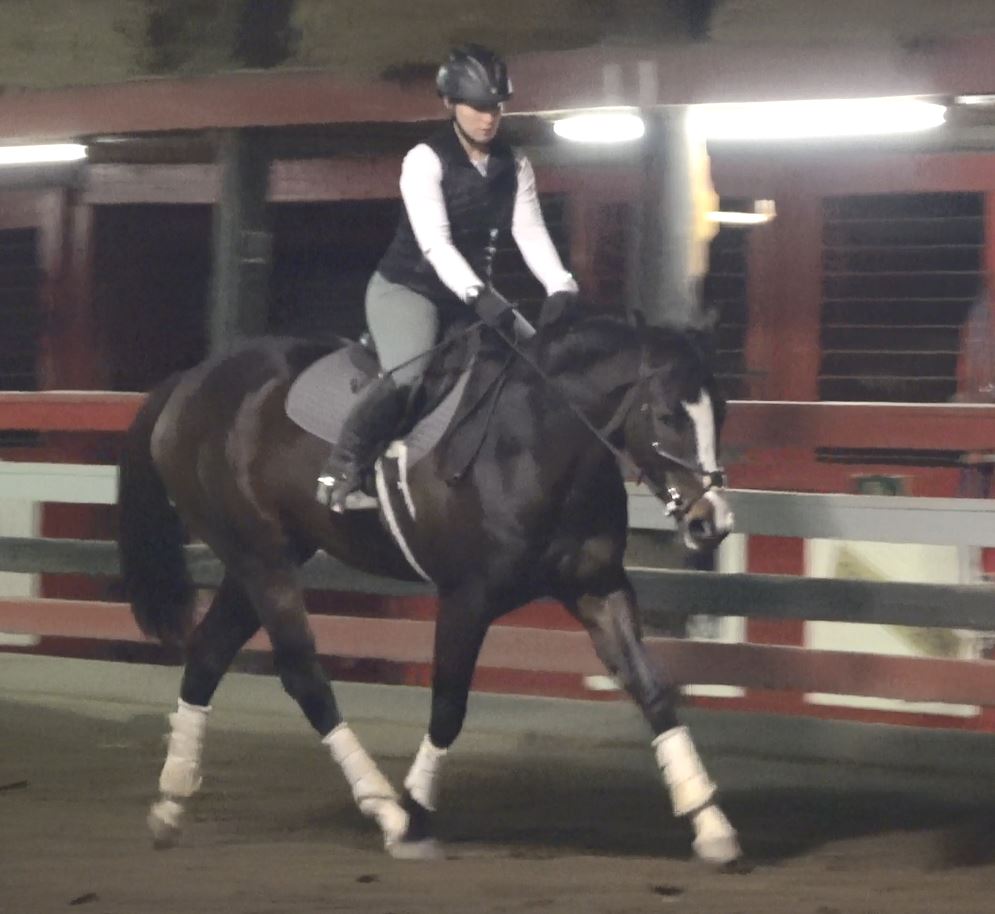My question: Young mare has a tendency to go too low and/or behind the contact, even with no change in my hands. I’ve noticed it gets worse with fatigue, so I give her lots and lots of breaks (plus, she just turned 4, her fitness isn’t up to par and won’t be for another several years really).
When raising her head to get her back where she should be, which hand is responsible (inside/outside)? Or both?
It goes without saying that leg is obviously added when trying to adjust her body, but she would happily just go “forward” without attempting to come to contact and just stay down there, sometimes with the reins loopy.
She seems to respond best to the inside hand doing it, with the outside remaining to contain the shoulder. I don’t know which is technically correct though.
Background: This is for my young mare, just turned 4. She has been ridden in a 20mm mullen soft Trust bit for the last year, and just got transitioned to a D-ring with large lozenge that I put sealtex on the bar area of the bit to mimic the feel and diameter of the Trust. She is approximately the same in both bits, maybe too soon to tell with the new one because she’s only been in it a couple weeks. She never gets ridden hard - for the past year it was maximum 3 rides a week for <35 mins including warmup, focused on forward and basic transitions. On that, I really haven’t had much time to truly work on this, but now that she’s turned 4 the workload is going to go up a bit.
This mare will willingly go around with her nose dragging the sand, on the lunge or under saddle. She is currently downhill but may (or may not) grow out of it. Though she is an OTTB, I have the attention of HUS QH folks, that’s how low and sweepy she goes.


 I give her tons of breaks. I’m sure some might say too many, but I’d rather be too easy on a young horse than too hard!
I give her tons of breaks. I’m sure some might say too many, but I’d rather be too easy on a young horse than too hard!